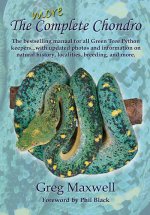I have had a solarmeter for a while now, and find it quite useful.
I didn't get any change from $380 all up once imported, duties etc.
I have been discussing the UV from downlights with the Guru's on a few UV sites, and bascially, most produce no real useable amounts of UVB with or without the glass removed. The other problem is that the glass is there to protect and filter, alot of the down lights have dangerous UVC, which can be dangerous to the retinas of reptiles, UVC is not something any animal on earth is naturally exposed to as it is filtered out by the ozone layer. There is also a risk that when the filters are removed tha the elements can explode and rain glass down onto the animals below, they can happen if for example a bit of water is sprayed onto the element. There is also a risk of thermal burns due to the incrediably hot temps that are reached.
Many of these things have not been mentioned in previous articles condoning the use of downlights, my advice is to steer clear.
Unfortunately, people seeking a cheap source of UVB/UVA will be disappointed, you need to buy the proper tubes or bulbs designed for the job.
Cheers
Neil





